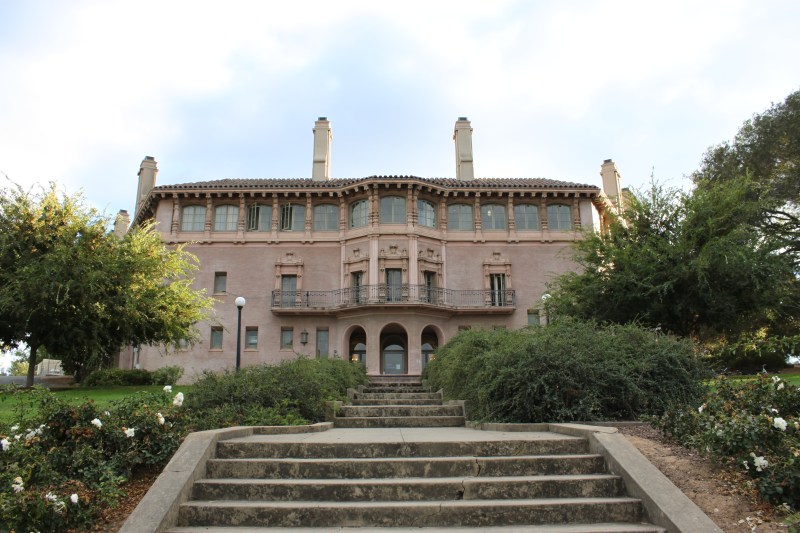The regal, eerie mansion nestled on Lomita Court is not what meets the eye. Home to Stanford’s Center for Computer Research in Music and Acoustics (CCRMA), the building transformed into a pulsing, visionary stage last Thursday during AV Club’s audiovisual show “Impulse Response.” The San Francisco-based computational arts collective presented three live-coded performances on the occasion of CCRMA’s 50th anniversary.
Audio artists Entropic, Nathan Ho and R Tyler curated thrilling sets full of the high-BPM music one might expect to hear at a rave — but they didn’t take the stage alone. Each set was equally dependent on the striking digital visuals that were created through computer code and displayed on large screens.
“Impulse response” is a music production term describing the way electronic sound systems respond to a given impulse (e.g. a short burst of sound), creating a unique pattern of reverberations and reflections. The performers brought this principle to life by exhibiting the lines of code creating the dynamic visual exhibits on screen. The stage’s transparency welcomed the audience into the creative process, which I felt pushed the experience beyond a mere spectacle or consumption of entertainment.
The night opened with a set by Entropic (also known as Ritwik Deshpande), who punctuated an ambient, electronic sound with lines of the artist’s own prose. Guests sat facing a screen where Entropic’s music translated to computer-generated visuals ranging from glowing laser beams collapsing into a network of lines, to montages of more fluid, elemental forms.
As the imagery behind him mellowed into a subtle pink, Entropic took the microphone, stating, in poetic intonation, “the creation of new machines is not enough to save you, the creation of new machines is not enough to set you free.” Guests offered cheers of affirmation. A striking break from conceptual imagery was the appearance of the word “DISSOLVE” in red lettering, a fitting word to sum up the ethos of Entropic’s set.
Nathan Ho introduced a more abstract, aggressive sound to CCRMA’s stage. Working with a completely live sound setup, Ho strung together a hypermodern soundscape, using everything from what sounded like blaring alarms, to electronic beats, to arcade game jingles. His music was mirrored by Polina Powers’s visuals.
Coding commands for Powers’s images appeared on the screen: She used beautiful yet strange elements of nature to match Ho’s sound, such as ferns, feathers and roots. The artist utilized stable diffusion, a generative artificial intelligence (AI) model that translates text to image. Powers live coded these grotesque images, multiplying them into grids according to Ho’s musical lead. The duo’s unpredictable sound and offbeat natural motifs heightened the intensity within the space.
After tie-dyed earplugs were passed around during the break after Ho and Powers’s set, the evening concluded with the upbeat dance music and bright shapes of R Tyler and Lukas Hermann. R Tyler, an “algorave” — or algorithm rave artist — entered over 1000 lines of code to create the sound, which was projected onto the screen in live time. Guests jived to the electronic sound, oscillating back and forth between reading code and looking at the imagery, the sound present throughout.
To match R Tyler’s sound, Hermann generated colorful, kaleidoscopic imagery. Though initially contained to colorful shapes, the visuals became increasingly psychedelic as the set progressed. R Tyler hid notes of gratitude in the code for those who were paying close attention. Whenever a guest noticed, they exchanged a smile with the musician, reaffirming the performance as a collective space of humanity.
Tucked away in Stanford’s center for sonic innovation, AV Club made clear how technology and digital visuals can powerfully redefine our relationship to sound. Beyond the show, I left CCRMA on Thursday reflecting on the communal experience of music and the infinite possibilities of art.
Editor’s Note: This article is a review and includes subjective thoughts, opinions and critiques.
